



CV-59 FORRESTAL class
The development of the Forrestal, the U.S. Navy's first super carrier, represented many significant improvements over previous carrier designs. Forrestal was the first carrier designed specifically to operate jet aircraft, and included an angled deck which permitted simultaneous takeoffs and landings. Forrestal's revolutionary design became the basis for all US carriers that followed. The flight deck had a different layout than later aircraft carriers, with the island placed closer to the bow and a different starboard elevator configuration (one forward, two aft). On the port side, the number four elevator is forward of the two waist catapults -- on later carriers, that elevator is aft of the waist cats.
On July 29, 1967 the USS Forrestal was operating off the coast of
Vietnam, when a Zuni rocket accidentally fired from an F-4 Phantom into a parked and armed A-4 Skyhawk. The impact caused the belly fuel tank and a 1,000 pound bomb on the Skyhawk to fall off, spilling JP5 (jet fuel) onto the flight deck and ignited a fire. The bomb exploded, causing a massive chain reaction of explosions fed by fuel and bombs from other aircraft that were armed and ready for the coming strike. Fuel and bombs spilled into the holes in the flight deck igniting fires on lower decks. This was the single worst loss of life on a navy vessel since the USS
Franklin (CV-13) was bombed in WWII: 134 lost their lives, while an additional 64 were injured.
For over 30 years, the sailors and aviators of the Forrestal sailed her though 21 successful operational deployments. In 1991, Forrestal provided support for Operation Provide Comfort, the international relief effort for the Kurds in northern Iraq. The ship completed the first noncombatant evacuation exercise ever conducted from a carrier, as well as many
NATO and other multi-national exercises during her final deployment. In February 1992, the Forrestal changed her homeport from Mayport FL to Pensacola FL to become the US Navy's training carrier for naval aviators and support personnel. Forrestal arrived at the Philadelphia Naval Shipyard in September 1992 for her scheduled 14-month complex overhaul. The overhaul was discontinued in March 1993 when the Forrestal was designated for decommissioning in response to the decision to accelerate the closure of the Pennsylvania Naval Shipyard. USS Forrestal was decommissioned on 11 September 1993 in a ceremony at pier 6E at the Philadelphia Naval Shipyard. USS Forrestal remains moored at Philadelphia Naval Shipyard, awaiting final dispostion. Currently assigned to the U.S. Navy donation Program, she is being held for possible service as a museum and historical
center.
Saratoga was launched in Brooklyn, NY on October 8, 1955. Saratoga patrolled off the coasts of Cuba near Guantanamo Bay during the Cuban missile crisis. She was stationed off the
coast of Lebanon during the Six-Day War. She saw combat in the Tonkin Gulf during the Vietnam war and in the Red Sea during the Persian Gulf war, and she was the first carrier to transit the Suez Canal by night. Saratoga began her final deployment--the 22d of her 38-year career--on January 12, 1994. Entering the Adriatic on February 1, Saratoga and her embarked carrier Airwing 17, launched the first of thousands of sorties in support of United Nations and NATO operations `Deny Flight' and `Provide Promise' over Bosnia and Herzogovina. Saratoga was decommissioned on August 20, 1994.
USS Independence (CV 62) was commissioned as a "Forrestal Class" attack aircraft carrier (CVA 62) at the Brooklyn Naval Shipyard, New York, on January 10, 1959. In June 1988 Independence completed The Service Life Extension Program (SLEP) at the Philadelphia Naval Shipyard. The ship changed homeports on September 11, 1991, deploying to Yokosuka Japan to become the Navy's only forward deployed aircraft carrier. On June 30, 1995, the 36-year-old Independence became the oldest ship in the Navy's active fleet, the first aircraft carrier to hold the honor. The ship is scheduled to decommission in the Fall of 1998. USS Kitty Hawk (CV 63), homeported in San Diego, California, departed 15 July 1998 for Yokosuka, Japan, where will replaced USS Independence (CV 62) as part of a planned rotation of forward-deployed naval forces. Subequently Independence returned to the United States, and was decommissioned on 30 September 1998.
The navy originally planned eight ships of the Forrestal class. When improvements in the original Forrestal design were incorporated into the last four, they were designated as the separate Kitty Hawk class.
Specifications
|
|
Displacement | 75,900 to 79,300 tons full load
|
|
Length | 1,063 to 1,086
|
|
Beam | 129 feet
|
|
Flight Deck Width | 252 feet
|
|
Speed | 30-plus knots
|
|
Power Plant | Eight boilers, with Forrestal's plant
approximately 50 percent lower pressure than other ships in class;
four geared steam turbines, four shafts
260,000 shaft horsepower for Forrestal, 280,000 for others
|
|
Aircraft | Approximately 75
|
|
Armament | Sea Sparrow missiles
3 Phalanx CIWS 20mm mounts [installed during SLEP]
|
| Combat Systems |
SPS-48C 3-D Air Search Radar
SPS-49 Air Search Radar
SPS-67
3 Mk91 Fire Control
SLQ-29 EW
WLR- 1 ESM
WLR- 3 ESM
WLR-11 ESM
|
|
Complement | 3,019 ship's company
2,480 in air wing
|
Unit Operating Cost
Annual Average | $142,000,000 [source: [FY1996 VAMOSC]
|
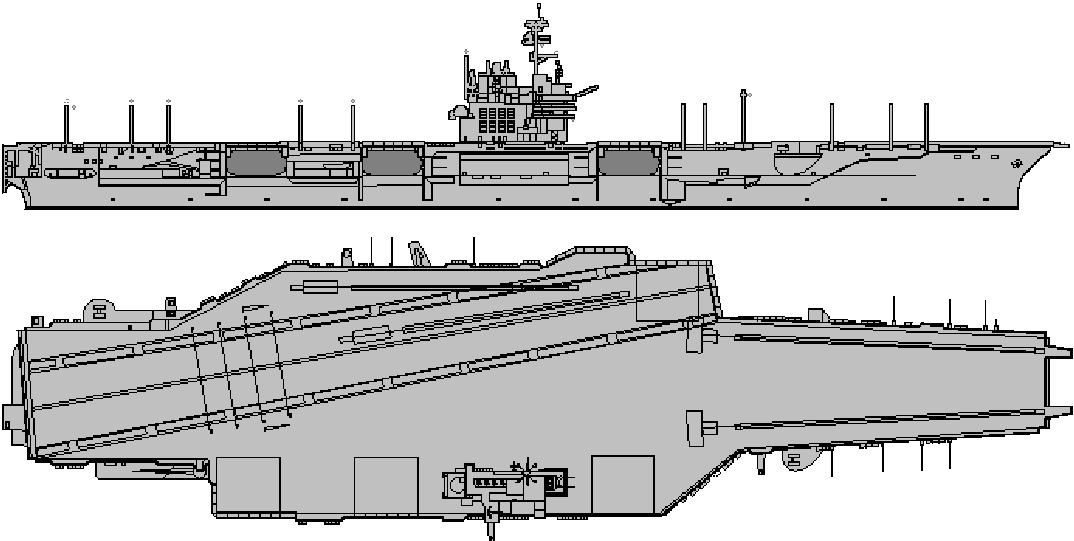
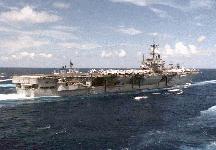
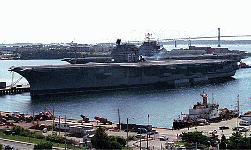
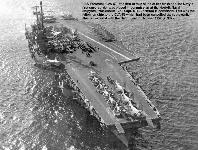
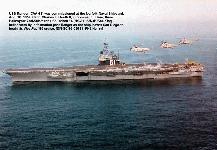
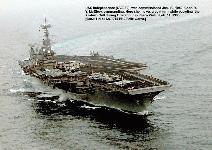
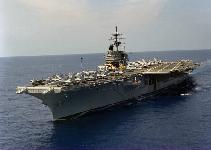
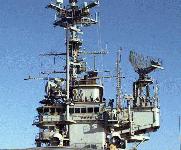
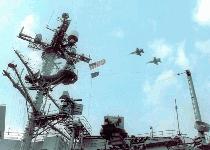
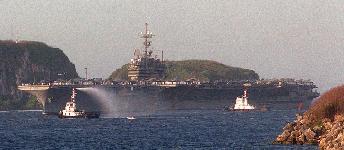
Sources and Resources
http://www.fas.org/man/dod-101/sys/ship/cv-59.htm
Maintained by Robert Sherman
Originally created by John Pike
Updated Saturday, March 06, 1999 11:26:32 AM























